Resident Crews of the International Space Station (ISS)
![]()
ISS: Expedition 32 |
 |
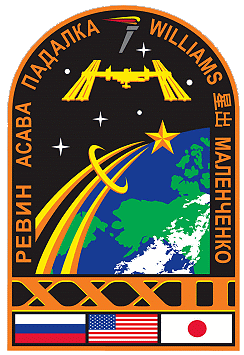 |
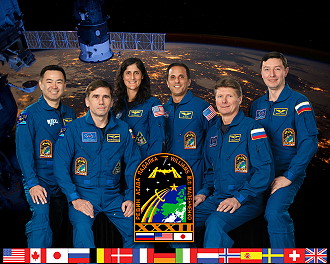 |
alternative crew photo |
|
alternative crew photo |
|
alternative crew photo |
|
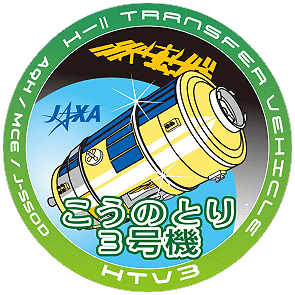 |
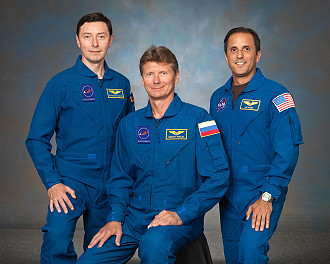 |
alternative crew photo |
alternative crew photo |
alternative crew photo |
![]()
Crew, launch- and landing data
| No. | Nation | Surname | Given names | Position | Spacecraft (launch) |
Launch date |
Launch time |
Spacecraft (landing) |
Landing date |
Landing time |
Mission duration |
Orbits |
| 1 | Padalka | Gennadi Ivanovich | ISS-CDR | Soyuz TMA-04M | 15.05.2012 | 03:01:22.968 UTC | Soyuz TMA-04M | 17.09.2012 | 02:52:51.9 UTC | 124d 23h 51m 30s | 1946 | |
| 2 | Revin | Sergei Nikolayevich | Flight Engineer-1 | Soyuz TMA-04M | 15.05.2012 | 03:01:22.968 UTC | Soyuz TMA-04M | 17.09.2012 | 02:52:51.9 UTC | 124d 23h 51m 30s | 1946 | |
| 3 | Acaba | Joseph Michael | Flight Engineer-3 | Soyuz TMA-04M | 15.05.2012 | 03:01:22.968 UTC | Soyuz TMA-04M | 17.09.2012 | 02:52:51.9 UTC | 124d 23h 51m 30s | 1946 | |
| 4 | Malenchenko | Yuri Ivanovich | Flight Engineer-4 | Soyuz TMA-05M | 15.07.2012 | 02:40:03.091 UTC | Soyuz TMA-05M | 19.11.2012 | 01:53:20.1 UTC | 126d 23h 13m 17s | 1973 | |
| 5 | Williams | Sunita Lyn "Suni" | Flight Engineer-5 | Soyuz TMA-05M | 15.07.2012 | 02:40:03.091 UTC | Soyuz TMA-05M | 19.11.2012 | 01:53:20.1 UTC | 126d 23h 13m 17s | 1973 | |
| 6 | Hoshide | Akihiko | Flight Engineer-6 | Soyuz TMA-05M | 15.07.2012 | 02:40:03.091 UTC | Soyuz TMA-05M | 19.11.2012 | 01:53:20.1 UTC | 126d 23h 13m 17s | 1973 |
unofficial Backup Crew
| No. | Nation | Surname | Given names | Position |
| 1 | Novitsky | Oleg Viktorovich | ISS-CDR | |
| 2 | Tarelkin | Yevgeni Igorevich | Flight Engineer | |
| 3 | Ford | Kevin Anthony | Flight Engineer | |
| 4 | Romanenko | Roman Yuriyevich | Flight Engineer | |
| 5 | Marshburn | Thomas Henry "Tom" | Flight Engineer | |
| 6 | Hadfield | Chris Austin | Flight Engineer |
 |
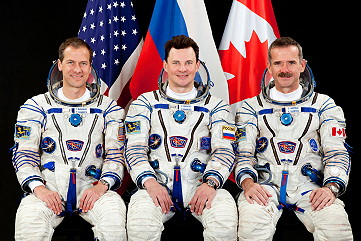 |
 |
Expedition Report
|
Launch from the Baikonur Cosmodrome (Yuri
Malenchenko, Sunita
Williams and Akihiko
Hoshide with
Soyuz
TMA-05M). Gennadi
Padalka, Sergei
Revin and Joseph
Acaba were onboard since May 17, 2012 (arrival with
Soyuz
TMA-04M). ISS Expedition 32 began with the undocking of spacecraft Soyuz TMA-03M on July 01, 2012 at 04:47:43 UTC. The former Expedition 31 (Oleg Kononenko, Donald Pettit and André Kuipers) returned safely to Earth. With the arrival of Soyuz TMA-05M on July 17, 2012 the Expedition 32 became a six-person-crew. Soyuz TMA-05M carried Yuri Malenchenko, Sunita Williams and Akihiko Hoshide to the space station. On July 27, 2012 Akihiko Hoshide used the International Space Station’s Canadarm2 robotic arm to install the Japan Aerospace Exploration Agency (JAXA) H-II Transfer Vehicle, or HTV-3, to its docking port on the Earth-facing side of the Harmony node. Earlier, working from the robotic workstation inside the station’s cupola, Joseph Acaba, with the assistance of Akihiko Hoshide, captured the 16.5-ton cargo ship with the station's Canadian Space Agency-provided robotic arm. Kounotori 3 was launched aboard H-IIB rocket from Tanegashima Space Center at 02:06:18 UTC (11:06:18 JST) on July 21, 2012. The rocket flew smoothly arching out over the Pacific Ocean on a southeasterly trajectory 51.6 degrees titled to the Equator. Two minutes after liftoff, the four strap-on solid rocket boosters separated from the launch vehicle and fell away in pairs as planned. The second stage then ignited and continued the push Kounotori 3 to orbit. Four minutes into the flight the H-IIB jettisoned the payload fairing and the first stage. After igniting the second stage engine, the H-IIB inserted Kounotori 3 into its preferred initial orbit with separation confirmed at 14 minutes and 53 minutes after liftoff. Following the successful separation of Kounotori 3, the second stage engines were re-ignited for another time to perform a controlled re-entry test. The second stage dropped into the South Pacific Ocean shortly afterwards. There were no apparent launch problems during the entire flight of the H-IIB rocket. Kounotori 3 carries approximately 4.6 tons cargo, consisting of 3.5 tons in pressurized compartment and 1.1 tons in unpressurized compartment. Pressurized cargo consists of system equipment (61%), science experiments (20%), food (15%), and crew commodities (4%). It includes: Aquatic Habitat (AQH), JEM Small-Satellite Orbital Deployer (J-SSOD), five CubeSats (RAIKO, FITSAT-1, WE WISH, F-1, TechEdSat), i-Ball and REBR reentry data recorders, ISS SERVIR Environmental Research and Visualization System (ISERV). Additionally, loaded onto Kounotori 3's Resupply Racks was NASA's Water Pump Assembly (WPA) catalytic reactor to replace the former unit that broke in March 2012 in orbit and a cooling water circulation pump to replace the old unit in the Japanese Experiment Module (Kibo) that also broke at the end of March 2012. Kounotori 3 was unberthed by SSRMS at 11:50 UTC, September 11, 2012, and released at 15:50 UTC, September 12, 2012. A few minutes after release when leaving from ISS, Kounotori 3 entered abort sequence, quickly leaving to fore of ISS orbit instead of nominal gradual lower-fore trajectory. SpaceFlightNow reported that it was triggered by a failure of In/Out Computer 2, citing daily space station status report posted on a NASA website. NASA's ISS On-Orbit Status does not mention any non-nominal event. At the press briefing, HTV Flight Director Takashi Uchiyama said that it was activated due to the residual motion of HTV after the release by SSRMS, which was considered to exceed the free fall bounding box before nominal activation of departure maneuver. Later, Aviation Week reported that it was caused by the friction between Kounotori's grapple fixture and the station's robotic arm. After de-orbit burns, Kounotori 3 entered atmosphere and was destroyed around 05:27 UTC on September 14, 2012. Progress M-16M was launched on time at 19:35:13 UTC on August 01, 2012 from the Baikonur Cosmodrome in Kazakhstan. Ten minutes after liftoff, the Soyuz-U Rocket carrying Progress M-16M successfully delivered the spacecraft to orbit to begin its International Space Station (ISS) Resupply Mission. Progress M-16M debuted the use of a fast approach rendezvous profile that saw the spacecraft docking on its fourth orbit, as opposed to docking about 50 hours after launch on previous Progress flights. This profile allows the transportation of critical biological payloads to the ISS. After testing on Progress flights, the same rendezvous profile is being used on manned Soyuz flights to reduce crew fatigue. Progress M-16M was packed with 1,397 kilograms of equipment, food, clothing, life support system gear ("dry" cargo), 680 kilograms of propellant to replenish reservoirs that feed the Russian maneuvering thrusters, 420 kilograms of water and 47 kilograms of oxygen and air. Progress M-16M departed the Pirs Docking Compartment at 13:15:27 UTC on February 09, 2013 performing a nominal undocking to begin a very short free flight. The first EVA was performed by Gennadi Padalka and Yuri Malenchenko on August 20, 2012 (5h 51m). The cosmonauts moved a Strela-2 cargo boom from the Pirs docking compartment to the Zarya module. This allows Pirs to be undocked at a later date making room for the new Russian multipurpose laboratory. Other tasks included releasing a small satellite and installing debris shields. The second EVA by Sunita Williams and Akihiko Hoshide occurred on August 30, 2012 (8h 17m). The astronauts replaced a faulty power routing unit on the station's truss (partly failed) and run cables for an upcoming Russian laboratory module. Sunita Williams and Akihiko Hoshide performed a third EVA on September 05, 2012 (6h 28m). The astronauts completed the installation of a spare power unit on the station's truss. Expedition 32 and Expedition 33 / 34 continue to expand the scope of research aboard the International Space Station, with new research facilities being delivered and a new micro-satellite deployment system being tested. The station has returned to a predominantly six-person crew, allowing more crew time available for science activities. During this timeframe, more than 240 experiments will be performed on the station, involving more than 80 new experiments, technology demonstrations and facilities. More than 400 investigators from around the world are involved in the various types of research. The investigations cover human research, biological and physical sciences, technology development, Earth observation, and education. Several new Japan Aerospace Exploration Agency (JAXA) investigations are joining the suite of research. JAXA's Japanese Experiment Module (JEM) Small Satellite Orbital Deployer (J-SSOD) will demonstrate a new capability to launch small satellites from the JEM Remote Manipulator System - also known as the Kibo Laboratory robotic arm. This technology development demonstration is intended to prove air, water, and surface monitoring capabilities. The Aquatic Habitat (AQH) is planned for delivery on JAXA's H-II Transfer Vehicle-3 (HTV-3) also known as Konotouri 3, scheduled to launch July 21, 2012 and the third HTV to visit the station. This freshwater habitat is a new facility for the space station, which will enable investigations using fish, to learn more about bone and muscle atrophy (medical issues for the aging population) and radiation effects. The first planned residents of the habitat are Medaka fish, which are transparent - allowing for easy observation of their skeletal systems. The fish will be delivered to the station on a later flight. This facility will be housed in the Kibo laboratory. Testing the performance of a miniaturized flow cytometer, Microflow1, is a new investigation provided by the Canadian Space Agency (CSA). Flow cytometers use a laser to analyze individual cells for cell counting and sorting, biomarker (disease signatures) detecting, and protein engineering. This technique is used routinely in diagnosing health issues, and is useful in basic research and many clinical applications. An operational medical tool of this kind on the station would allow for many types of testing and analysis, including blood cell counts (complete blood count or CBCs) to be done in orbit. This type of blood testing is quite common on Earth and is often one of the first activities performed by physicians to determine illness specifics. A flow cytometer would make this standard test available aboard the station. Another first-time investigation is NASA's Advanced Colloids Experiment-1 (ACE-1), using a light microscope to help provide a better understanding of crystallization and phase separation of small colloidal particles, and production quality control. Results from this research could considerably impact the shelf-life of many products used on Earth and for long-duration spaceflight missions. As with prior expeditions, many investigations are designed to gather information about the effects of long-duration spaceflight on the human body, which will help us understand complicated processes such as immune systems with plans for future exploration missions. The European Space Agency's human research involving Circadian Rhythms examines the role of synchronized circadian rhythms (the human body's 24-hour light-dark cycle) and possible maintenance during long-duration spaceflight and addresses the impacts to crew members' health and wellbeing. Understanding how light/dark cycles and sleep pattern changes affect circadian rhythms enhances adaptation, performance and healthcare of future crew members. Results from this research could also be a benefit for shift workers on Earth. The International Space Station Test Bed for Analog Research I-STAR Earth Departure Communications Delay Study (COMM Delay) will assist engineers and scientists in human research regarding communication delays likely to be experienced during a mission to Mars, an asteroid, or other possible destinations. Researchers want to understand any significant impacts in crew behavior and performance, including where in the communications delay is the critical point possibly affecting behavioral and task performance. The first full voice communications delay test is planned during Expedition 36, which starts in summer 2013. As part of U.S. National Laboratory activities on the station, NanoRacks modules provide autonomous, self-contained experiments that can be flown quickly and inexpensively by students, companies and other U.S. government agencies. NanoRacks facilities are being expanded, with the addition of a small centrifuge and a plate reader to be used for plant and animal tissue investigations, and allowing for onsite microbiological analysis, expanding life science and biological research on the station. The NanoRacks plate reader is a laboratory instrument designed to detect biological, chemical or physical events of samples in microtiter plates (a flat plate with lots of "wells" used as small test tubes). Microplate readers are widely used in research, drug discovery, bioassay validation (determination of purity concentration or biological activity), quality control and manufacturing processes in the pharmaceutical and biotechnological industry and academic organizations. Another U.S. Laboratory offering, the National Laboratory Pathfinder - Vaccine - Salmonella (NLPVaccine-Salmonella) investigation continues. Investigators are researching a vaccination for salmonella for the prevention of infection on Earth and in microgravity. Worldwide, salmonella is the most common cause of food poisoning and a major cause of death in children. Earth science also is on the list of topics that generates much interest, and there are many investigations involving this aspect. ISS SERVIR Environmental Research and Visualization System (ISERV) is an investigation designed to gain experience and expertise in automated data acquisition. ISERV will serve as a pathfinder investigation that will lead to the development of enhanced capabilities that will provide useful images to support disaster (or other significant event) monitoring and assessment, and environmental decision making when needed. ISERV is a joint venture between NASA and the U.S. Agency for International Development (USAID) and will be installed in the Window Observational Research Facility (WORF). The European Space Agency's Facility for Absorption and Surface Tension (FASTER) will be flown for the first time on the space station. This investigation will research how surfactants will affect the physical chemistry properties and emulsion stability of droplet interfaces. The goal is to generate a model of emulsion dynamics that can then be used in industrial applications where mixtures of two or more liquids that are typically unable to be blended (for instance oil and water) are desired. In typical NASA and international partner fashion, there are many educational activities and investigations planned to teach and inspire students of all ages. The YouTube Space Lab Global Science contest winners were chosen and announced, with the two winning experiments being flown and performed on the space station before the end of the year. Earth Knowledge Acquired by Middle School Students (EarthKAM) continues to excite and engage middle-school students. Alpha Magnetic Spectrometer-02 (AMS) and Robonaut-2 investigations are ongoing. The AMS continues to collect a vast amount of data - measuring almost double the amount researchers expected, at a rate of about 1.2 billion particles per month. The testing of Robonaut's capabilities and movement continues as planned. The short-duration SpaceX demonstration mission returned several Material Science Research Rack (MSRR) sample cartridge assemblies used in metal alloy materials processing. The cartridge assemblies will be analyzed to understand the alloy solidification that occurred in microgravity during the Solidification along a Eutectic path in Ternary Alloys-2 (SETA) and Microstructure Formation in Casting of Technical Alloys under Diffusive and Magnetically Controlled Convective Conditions/ Columnar-to-Equiaxed Transition in Solidification Processing (MICAST/CETSOL) investigations. Used science hardware also was returned for either refurbishment or disposal. Finally, the station command changed from Russian cosmonaut Gennadi Padalka to American astronaut Sunita Williams. With undocking of Soyuz TMA-04M, carrying Gennadi Padalka, Sergei Revin and Joseph Acaba on September 16, 2012 at 23:08:53 UTC the Expedition 32 concluded and the new ISS Expedition 33 began. During the stay on board of the ISS the crews of Expeditions 31 / 32 carried out the following scientific experiments: 3DA1 Camcorder (Panasonic 3D Camera) ACE-1 (Advanced Colloids Experiment-1) ALTEA-Dosi (Anomalous Long Term Effects in Astronauts' - Dosimetry) ALTEA-Shield (Anomalous Long Term Effects in Astronauts' Central Nervous System - Shield) AMS-02 (Alpha Magnetic Spectrometer - 02) Alloy Semiconductor (Crystal Growth of Alloy Semiconductor Under Microgravity) Amine Swingbed (Amine Swingbed) Area PADLES (Passive Dosimeter for Lifescience Experiment in Space) BASS (Burning and Suppression of Solids) BCAT-3-4-CP (Binary Colloidal Alloy Test - 3 and 4: Critical Point) BCAT-4-Poly (Binodal Colloidal Aggregation Test - 4: Polydispersion) BCAT-5-3D-Melt (Binary Colloidal Alloy Test - 5: Three-Dimensional Melt) BCAT-5-PhaseSep (Binary Colloidal Alloy Test-5: Phase Separation) BCAT-5-Seeded_Growth (Binary Colloidal Alloy Test - 5: Seeded Growth) BCAT-6-Colloidal_Disks (Binary Colloidal Alloy Test - 6 - Colloidal Disks) BCAT-6-PS-DNA (Binary Colloidal Alloy Test - 6: Polystyrene - Deoxyribonucleic Acid) BCAT-6-Phase_Separation (Binary Colloidal Alloy Test - 6 - Phase Separation) BCAT-6-Seeded_Growth (Binary Colloidal Alloy Test - 6: Seeded Growth) BCAT-C1 (Binary Colloidal Alloy Test - C1) Biological Rhythms 48hrs (The effect of long-term microgravity exposure on cardiac autonomic function by analyzing 48-hours electrocardiogram) Bisphosphonates (Bisphosphonates as a Countermeasure to Space Flight Induced Bone Loss) CEO (Crew Earth Observations) CETSOL-2 (Columnar-to-Equiaxed Transition in Solidification Processing-2 ) CFE-2 (Capillary Flow Experiment - 2) Card (Long Term Microgravity: A Model for Investigating Mechanisms of Heart Disease with New Portable Equipment) Circadian Rhythms (Circadian Rhythms) DECLIC-ALI (DEvice for the study of Critical LIquids and Crystallization - Alice Like Insert) DOD SPHERES-CSAC (Department of Defense Synchronized Position, Hold, Engage, Reorient, Experimental Satellites-Chip Scale Atomic Clock) DOSIS-3D (Dose Distribution Inside the International Space Station - 3D) DTN (Disruption Tolerant Networking for Space Operations) Dynamic Surf (Experimental Assessment of Dynamic Surface Deformation Effects in Transition to Oscillatory Thermo capillary Flow in Liquid Bridge of High Prandtl Number Fluid) EKE (Assessment of Endurance Capacity by Gas Exchange and Heart Rate Kinetics During Physical Training) ELITE-S2 (ELaboratore Immagini TElevisive - Space 2) EPO-Demos (Education Payload Operation - Demonstrations) ESA-EPO (European Space Agency - Education Payload Operations) ESA NightPod (ESA NightPod) EarthKAM (Earth Knowledge Acquired by Middle School Students) Energy (Astronaut's Energy Requirements for Long-Term Space Flight) FLEX (Flame Extinguishment Experiment) FLEX-2 (Flame Extinguishment Experiment - 2) Functional Task Test (Physiological Factors Contributing to Changes in Postflight Functional Performance) HET-Smartphone (Human Exploration Telerobotics Smartphone) HREP-HICO (HICO and RAIDS Experiment Payload - Hyperspectral Imager for the Coastal Ocean) HREP-RAIDS (HICO and RAIDS Experiment Payload - Remote Atmospheric and Ionospheric Detection System (RAIDS)) Hair (Biomedical Analyses of Human Hair Exposed to a Long-term Space Flight) HiMassSEE (Spacecraft Single Event Environments at High Shielding Mass) Hicari (Growth of Homogeneous SiGe Crystals in Microgravity by the TLZ Method) I-BALL (I-BALL) I-STAR Comm Delay Preparation (ISS Testbed for Analog Research Communication Delay Preparation (I-STAR Comm Delay Preparation)) ISERV (ISS SERVIR Environmental Research and Visualization System) ISSAC (International Space Station Agricultural Camera) ISS Ham Radio (International Space Station Ham Radio) ISS High Efficiency Particle Filter Analysis (International Space Station High Efficiency Particle Filter Analysis) Immuno (Neuroendocrine and Immune Responses in Humans During and After Long Term Stay at ISS) InSPACE-3 (Investigating the Structure of Paramagnetic Aggregates from Colloidal Emulsions - 3) Integrated Cardiovascular (Cardiac Atrophy and Diastolic Dysfunction During and After Long Duration Spaceflight: Functional Consequences for Orthostatic Intolerance, Exercise Capability and Risk for Cardiac Arrhythmias) Integrated Immune (Validation of Procedures for Monitoring Crewmember Immune Function) JAXA-Commercial (Japan Aerospace Exploration Agency - Commercial Payload Program) JAXA EPO 5 (Japan Aerospace Exploration Agency Education Payload Observation 5) JAXA EPO 9 (Japan Aerospace Exploration Agency Education Payload Observation 9) Journals (Behavioral Issues Associated with isolation and Confinement: Review and Analysis of Astronaut Journals) LEGO Bricks (LEGO Bricks, formerly known as NLO-Education-2) MAXI (Monitor of All-sky X-ray Image) MCE (Multi-mission Consolidated Equipment) MFMG (Miscible Fluids in Microgravity) MICAST-2 (The Microstructure Formation in Casting of Technical Alloys under Diffusive and Magnetically Controlled Convective Conditions-2) MISSE-8 (Materials International Space Station Experiment - 8) Marangoni-Exp (Chaos, Turbulence and its Transition Process in Marangoni Convection-Exp) Marangoni-UVP (Spatio-temporal Flow Structure in Marangoni Convection) Medaka Osteoclast (Medaka Osteoclast) Micro-6 (Genotypic and Phenotypic Responses of Candida albicans to Spaceflight) Microbe-III (Microbe-III) NanoRacks-FPTU CubeSat-1 (NanoRacks-FPT University CubeSat-1) NanoRacks-NCESSE-Mission-1 (NanoRacks-National Center for Earth and Space Science Education-Mission-1) Nano Step (In-situ Observation of Growth Mechanisms of Protein Crystals and Their Perfection Under Microgravity) Neurospat (Effect of Gravitational Context on EEG Dynamics: A Study of Spatial Cognition, Novelty Processing and Sensorimotor Integration) Nutrition (Nutritional Status Assessment) ODK2 (Evaluation of Onboard Diagnostic Kit 2) Onboard Diagnostic Kit (Evaluation of Onboard Diagnostic Kit) Photosynth (Photosynth™ Three-Dimensional Modeling of ISS Interior and Exterior) Pro K (Dietary Intake Can Predict and Protect Against Changes in Bone Metabolism during Spaceflight and Recovery) REBR (ReEntry Breakup Recorder) RRM (Robotic Refueling Mission) Radiation Environment Monitor (Radiation Environment Monitor) Reaction Self Test (Psychomotor Vigilance Self Test on the International Space Station) Repository (National Aeronautics and Space Administration Biological Specimen Repository) Resist Tubule (Mechanisms of Gravity Resistance in Plants From Signal Transformation and Transduction to Response) Reversible Figures (Perspective Reversible Figures in Microgravity) Robonaut (Robonaut) SATS-Interact (Supervision of Autonomous and Teleoperated Satellites - Interact) SCAN Testbed (Space Communications and Navigation Testbed) SEDA-AP (Space Environment Data Acquisition Equipment - Attached Payload) SETA-2 (Solidification along a Eutectic path in Ternary Alloys-2) SHERE-II (Shear History Extensional Rheology Experiment - II) SMILES (Superconducting Submillimeter-Wave Limb-Emission Sounder) SNFM (Serial Network Flow Monitor) SODI-DSC (Selectable Optical Diagnostics Instrument - Diffusion and Soret Coefficient) SOLO (SOdium LOading in Microgravity) SPHERES (Synchronized Position Hold, Engage, Reorient, Experimental Satellites) SPHERES-Zero-Robotics (Synchronized Position Hold, Engage, Reorient, Experimental Satellites-Zero-Robotics) STP-H3-Canary (Space Test Program - Houston 3 - Canary) STP-H3-DISC (Space Test Program - Houston 3 - Digital Imaging Star Camera) STP-H3-MHTEX (Space Test Program - Houston 3 - Massive Heat Transfer Experiment) STP-H3-VADER (Space Test Program - Houston 3 - Variable emissivity radiator Aerogel insulation blanket Dual zone thermal control Experiment suite for Responsive space) Small Sat Deploy-Demo (Small Sat Deploy Demo) Solar-SOLACES (Sun Monitoring on the External Payload Facility of Columbus - SOLar Auto-Calibrating EUV/UV Spectrophotometers) Solar-SOLSPEC (Sun Monitoring on the External Payload Facility of Columbus -Sun Monitoring on the External Payload Facility of Columbus -SOLar SPECtral Irradiance Measurements) SpaceDRUMS (Space Dynamically Responding Ultrasonic Matrix System) Space Headaches (Space Headaches) Spin (Validation of Centrifugation as a Countermeasure for Otolith Deconditioning During Spaceflight) Sprint (Integrated Resistance and Aerobic Training Study) TecEdSat (TecEdSat) Thermolab (Thermoregulation in Humans During Long-Term Spaceflight) Tomatosphere-III (Tomatosphere-III) Treadmill Kinematics (Biomechanical Analysis of Treadmill Exercise on the International Space Station) UBNT (Ultrasonic Background Noise Test) V-C REFLEX (Plastic alteration of vestibulo-cardiovascular reflex and its countermeasure) VIABLE ISS (eValuatIon And monitoring of microBiofiLms insidE International Space Station) VO2max (Evaluation of Maximal Oxygen Uptake and Submaximal Estimates of VO2max Before, During, and After Long Duration International Space Station Missions) Vascular (Cardiovascular Health Consequences of Long-Duration Space Flight) Vessel ID System (Vessel ID System) Vessel Imaging (Vascular Echography) You Tube Space Lab (You Tube Space Lab) |
EVA data
| Name | Start | End | Duration | Mission | Airlock | Suit | |
| EVA | Malenchenko, Yuri | 20.08.2012, 15:37 UTC | 20.08.2012, 21:28 UTC | 5h 51m | ISS-32 | ISS - Pirs | Orlan-MK No. 6 |
| EVA | Padalka, Gennadi | 20.08.2012, 15:37 UTC | 20.08.2012, 21:28 UTC | 5h 51m | ISS-32 | ISS - Pirs | Orlan-MK No. 5 |
| EVA | Williams, Sunita | 30.08.2012, 12:16 UTC | 30.08.2012, 20:33 UTC | 8h 17m | ISS-32 | ISS - Quest | EMU No. 3011 |
| EVA | Hoshide, Akihiko | 30.08.2012, 12:16 UTC | 30.08.2012, 20:33 UTC | 8h 17m | ISS-32 | ISS - Quest | EMU No. 3015 |
| EVA | Williams, Sunita | 05.09.2012, 11:06 UTC | 05.09.2012, 17:34 UTC | 6h 28m | ISS-32 | ISS - Quest | EMU No. 3010 |
| EVA | Hoshide, Akihiko | 05.09.2012, 11:06 UTC | 05.09.2012, 17:34 UTC | 6h 28m | ISS-32 | ISS - Quest | EMU No. 3011 |
ISS Assembly
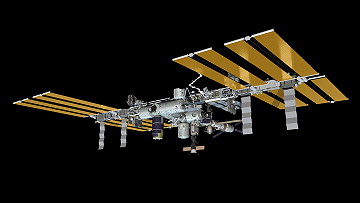 |
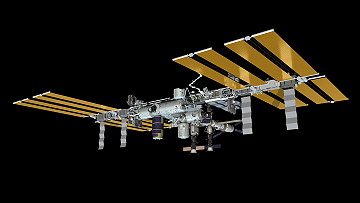 |
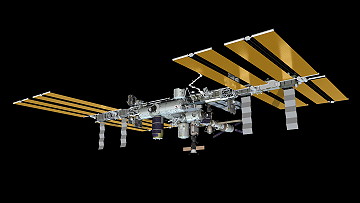 |
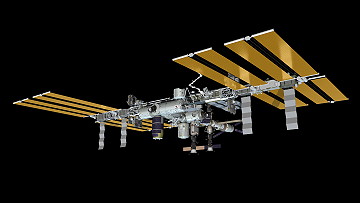 |
Photos
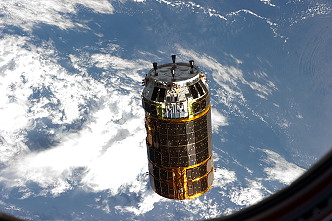 |
 |
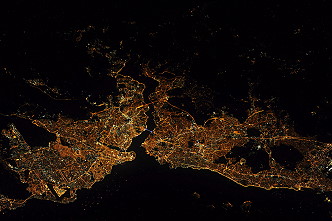 |
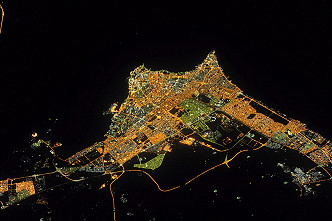 |
 |
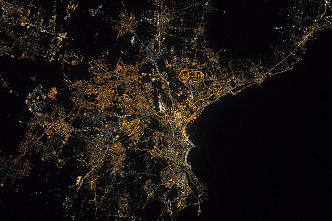 |
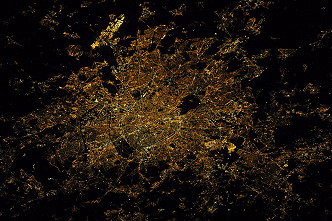 |
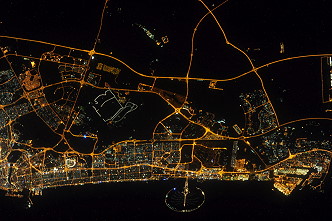 |
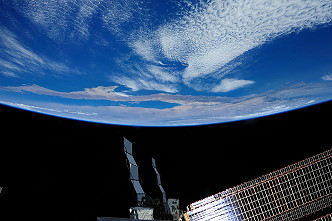 |
 |
 |
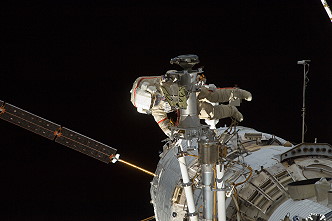 |
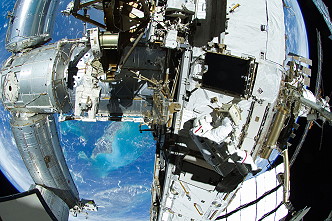 |
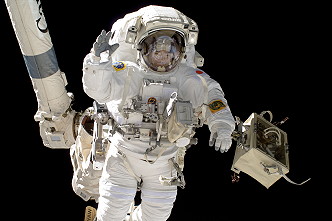 |
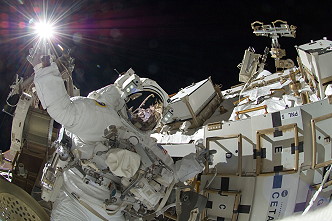 |
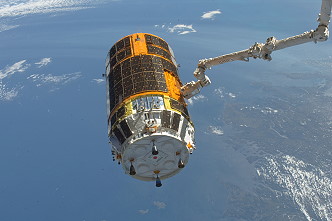 |
 |
 |
more EVA photos |
|
more onboard photos |
|
| © |  |
Last update on December 14, 2020.  |
 |